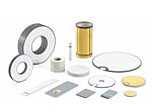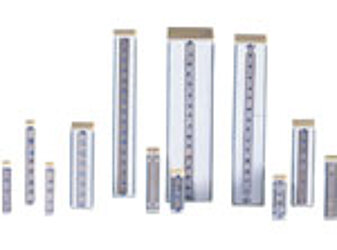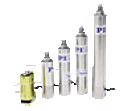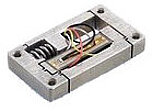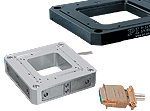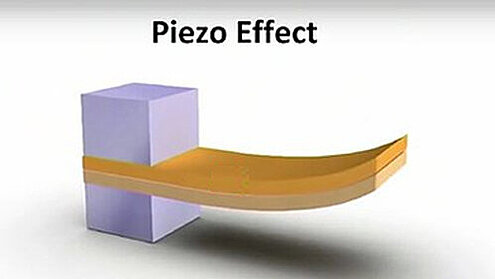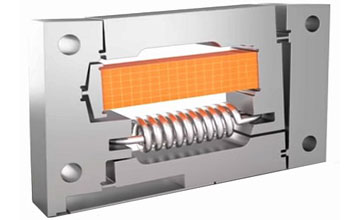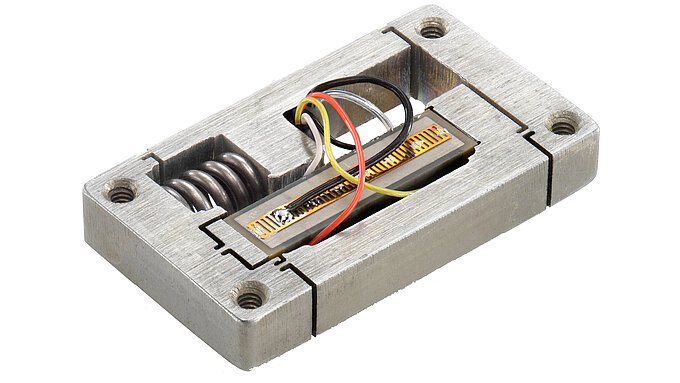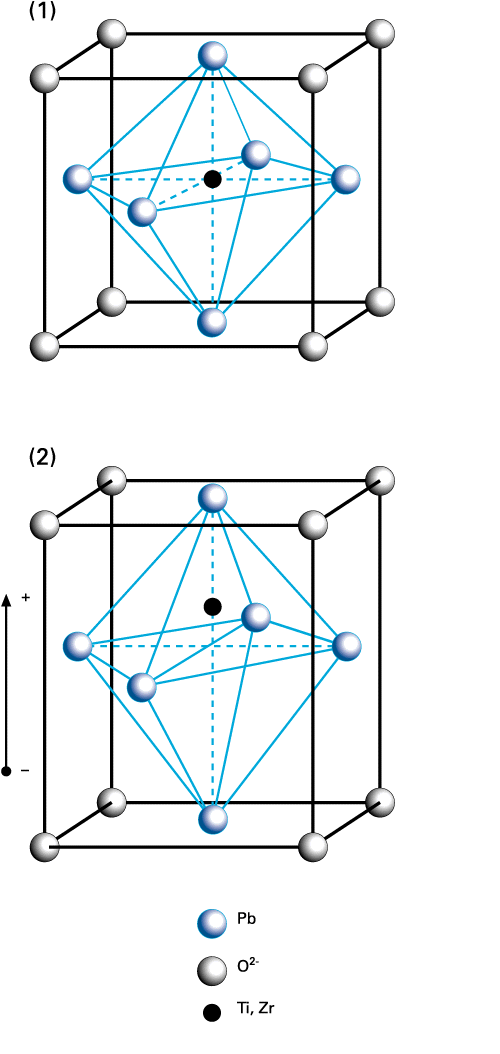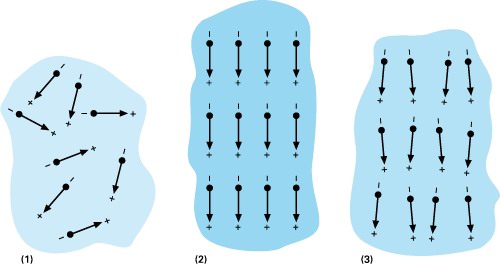The following sections give a detailed overview of the piezoelectric effect for motion applications and the ooperation of piezo mechanics.
Piezo Effect Video: Motors, Actuators, Applications
Piezoelectric Material Properties
Since the piezoelectric effect exhibited by natural materials such as quartz, tourmaline, Rochelle salt, etc. is very small, polycrystalline ferroelectric ceramic materials such as BaTiO3 and Lead Zirconate Titanate (Piezo) have been developed with improved properties. Ferroelectric ceramics become piezoelectric when poled. Piezoelectric ceramics are available in many variations and are still the most widely used materials for actuator or sensor applications today. Piezo crystallites are centro-symmetric cubic (isotropic) before poling and after poling exhibit tetragonal symmetry (anisotropic structure) below the Curie temperature. Above this temperature they lose the piezoelectric properties.
Charge separation between the positive and negative ions is the reason for electric dipole behavior of the piezoelectric effect. Groups of dipoles with parallel orientation are called Weiss domains. The Weiss domains are randomly oriented in the raw piezoelectric material, before the poling treatment has been finished. For this purpose an electric field (> 2000 V/mm) is applied to the (heated) piezoelectric ceramics. With the field applied, the material expands along the axis of the field and contracts perpendicular to that axis. The electric dipoles align and roughly stay in alignment upon cooling. The material now has a remanent polarization (which can be degraded by exceeding the mechanical, thermal and electrical limits of the material). As a result, there is a distortion that causes growth in the Dimensions aligned with the field and a contraction along the axes normal to the electric field.
When an electric voltage is applied to a poled piezoelectric material, the Weiss domains increase their alignment proportional to the voltage. The result is a change of the dimensionss (expansion, contraction) of the piezoelectric material.
If you have any questions, ask a PI engineer for help.
